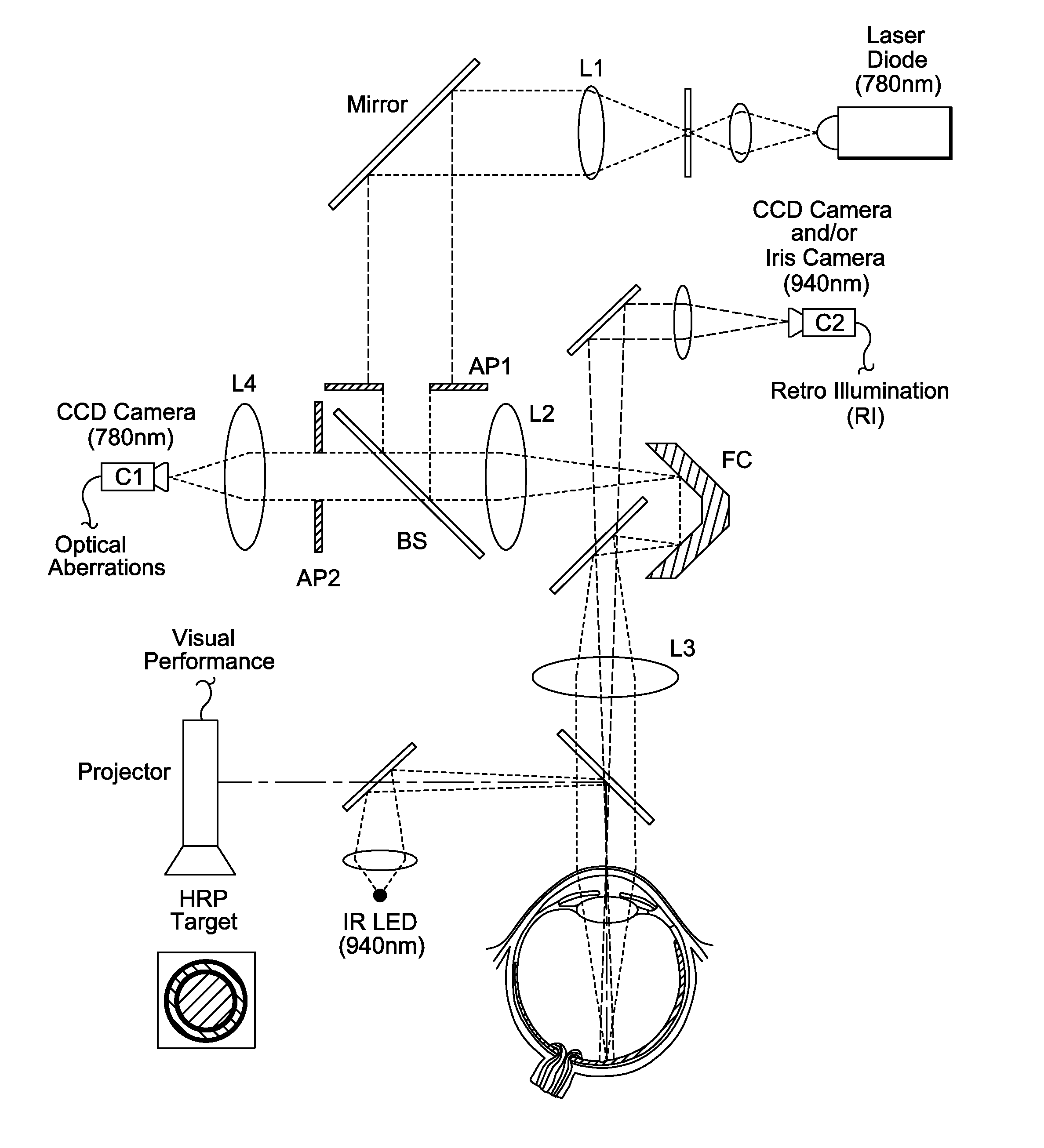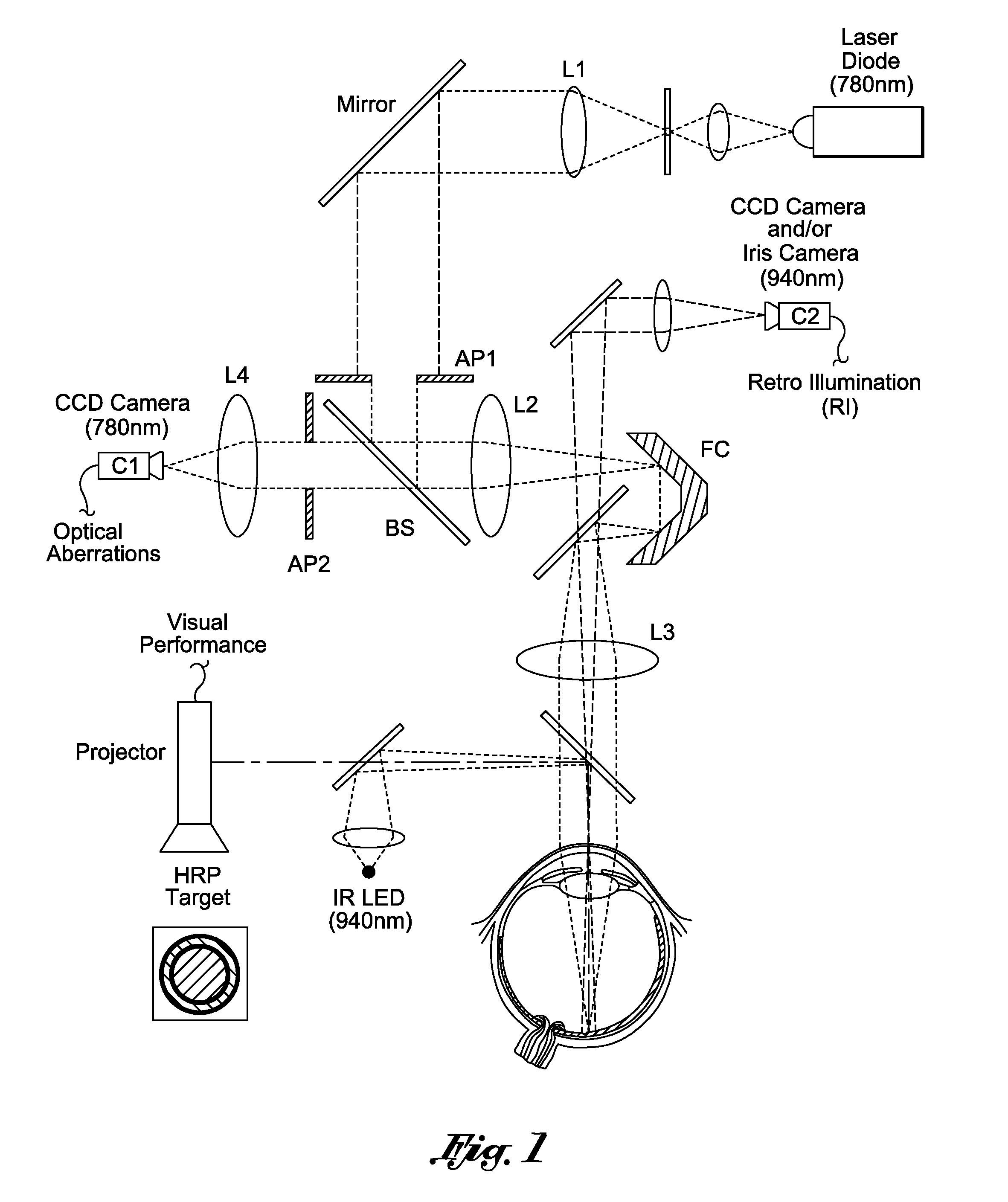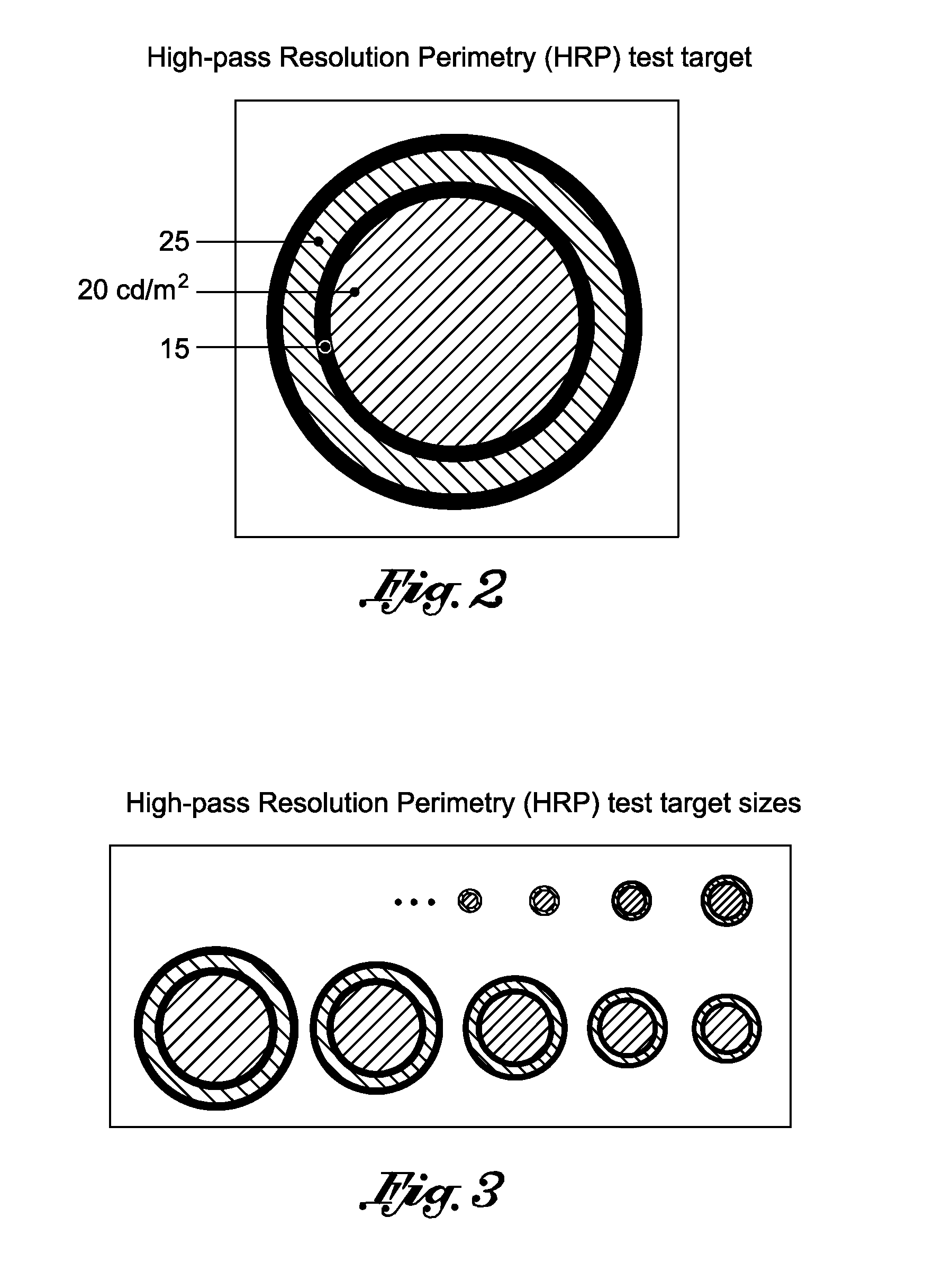Instrument and method for diagnosing dry eye in a patient
a technology eye, applied in the field of instruments and methods for diagnosing dry eye in patients, can solve the problems of burdening patients and physicians, affecting the optical quality, and affecting the so as to accurately assess conditions and diseases, the effect of visual performance of the ey
- Summary
- Abstract
- Description
- Claims
- Application Information
AI Technical Summary
Benefits of technology
Problems solved by technology
Method used
Image
Examples
example 1
[0048]A 63 year old female patient tells her ophthalmologist about excess tearing, burning eyes, and intermittent blurred vision. The ophthalmologist conducts an ocular surface exam which includes surface staining assessment with fuorescein / yellow filter, a schirmer I test without anesthetic, and lid and meibomian morphology. The patient is then referred to a technician who utilizes the present invention to simultaneously and non-invasively assess tear film stability and its impact upon functional vision. Thus, a full exam satisfying all of the DEWS (Dry Eye Workshop) recommendations is achieved with two the of critical components (i.e., tear film stability and functional vision) completed by a trained technician. The ophthalmologist determines the patient has DED and provides treatment.
example 2
[0049]Suspected DED patients present to an optometrist complaints of excess tearing, burning eyes, and / or intermittent blurred vision. The optometrist utilizes the present invention to simultaneously and non-invasively assess tear film stability and its impact upon functional vision. The optometrist also utilizes a third channel (i.e., Shack-Hartmann aberrometer and / or double-pass optical method) to screen non-native speaking patients and / or an individual who could not perform the psychophysical task by comparing the Shack-Hartmann aberrometer and / or double-pass optical method of measuring aberrations to the results from a retro-illumination image of the tear film. If tear film instability is identified along with significant impairments in functional vision the patient is referred to an ophthalmologist who conducts an ocular surface exam and provides treatment accordingly.
example 3
[0050]In a clinical trial testing a treatment for DED, the present invention is used to determine effectiveness of the treatment. High-pass Resolution Perimetry (HRP) test targets are substituted with Snellen Visual Acuity optotypes (e.g., letters, “E”s, or symbols) which are varied in size not contrast. This allows direct extrapolation of the test results to established metrics of visual acuity, LogMAR visual acuity, facilitating a clear understanding of the clinical significance of any observed changes in tear break-up.
PUM
 Login to View More
Login to View More Abstract
Description
Claims
Application Information
 Login to View More
Login to View More - R&D
- Intellectual Property
- Life Sciences
- Materials
- Tech Scout
- Unparalleled Data Quality
- Higher Quality Content
- 60% Fewer Hallucinations
Browse by: Latest US Patents, China's latest patents, Technical Efficacy Thesaurus, Application Domain, Technology Topic, Popular Technical Reports.
© 2025 PatSnap. All rights reserved.Legal|Privacy policy|Modern Slavery Act Transparency Statement|Sitemap|About US| Contact US: help@patsnap.com



